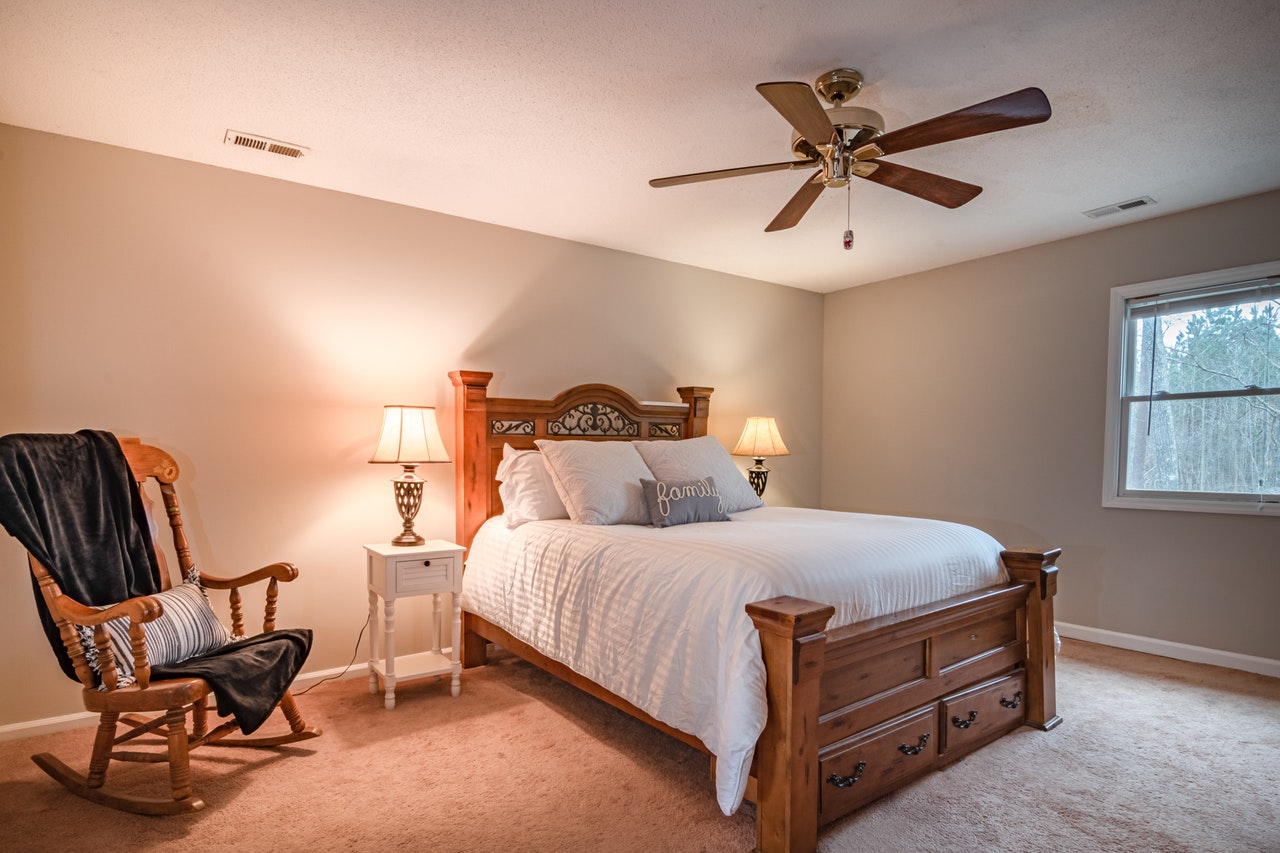What to consider when buying a ceiling fan

In this article, we are going to explore what you should consider before you get a ceiling fan and what the various advantages are to a ceiling fan. We are also going to answer some common questions that we get about ceiling fans.
Why should you get a ceiling fan?
Energy Savings
Ceiling fans can help you save on your electricity bill. Studies conducted overseas have shown that the use of a ceiling fan can actually help you save on your electricity bill. Ceiling fans improve the circulation of airconditioned rooms in summer and winter, this means the air conditioner doesn't have to work as hard. This is also true in winter, your fan can be put into a reverse mode that allows it to gently 'pull' air up and move hot air from the ceiling towards the floor where there is human occupancy.
Most ceiling fan motors do not use more than 40 - 100w this is a similar wattage to the old carbon filament light bulbs.
Aesthetic
There are some very 'out-there' ceiling fan designs. A ceiling fan can really aid in bringing a room's overall aesthetic together in a cohesive manner. You can get a ceiling fan that matches your overall décor, or you can purchase a ceiling fan that is slightly more subtle and purely functional.
What should you consider when buying a ceiling fan?
What size ceiling fan do I need?
The first thing you should consider before buying a ceiling fan is the size of the room that you are going to be using the ceiling fan in. Using the correct fan for your room of application is very important since it will determine the strength of the ceiling fan's airflow and ultimately how effective your ceiling fan is. When considering the size of your room, 2 dimensions are important: area - measured in square meters and height - measured in meters.
Room Area (Room Size)
Below is a table that shows you the recommended fan sizes depending on your room size. When we talk about fan "size" we are referring to the diameter from the tip of one blade to the tip of the opposite blade. For odd bladed fans, you can take the length from the centre of the fan to the tip of a blade, and then double this figure to get the total diameter.
| Min (mm) | Max (mm) | Application | Room size |
|---|---|---|---|
| 740 | 915 | Bathrooms, Breakfast Nooks, Utility Rooms | Up to 25m2 |
| 915 | 1220 | Bedrooms, Kitchens, Dining Rooms | Up to 55m2 |
| 1220 | 1420 | Large Bedrooms, Family Rooms, Media Rooms | Up to 110m2 |
| 1420 | 1600+ | Great Rooms, Other Large Spaces | More than 110m2 |
Exceptions to this rule:
- For very long rooms you may want to break the room up into sections and purchase multiple fans instead of using one large fan.
Ceiling fan suspension height
Hanging your ceiling fan at the correct height is also incredibly important. Too low and uncle Dicky, will be one foot shorter, too high and you may as well get a mouse to blow air on you softly. The point is, you invested some money in a ceiling fan and you want to hang it so it doesn't hurt anyone and so that you get the optimal airflow.
The minimum recommended suspension height is level with the top of your door frame. In most South African homes this will be about 2 - 2.2m above the floor. The maximum height that you should consider hanging your fan is about 2.5 - 3.5m in order to ensure optimal airflow. It should be noted that most ceiling fans come with a 230mm down rod. If you have a room with a particularly low ceiling you can consider a flush mount ceiling fan. In the case where your ceiling is really high, ceiling fan brands like Solent provide down rods up to 6m long.
Sloped ceilings
Most ceiling fans can be installed on ceilings with an angle of up to 45degrees. However, you also need to consider:
- The 'run' of the room
- the total height
- hanging height
The exception being flush-mounted ceiling fans which should not be installed on an angled ceiling.
Does the ceiling fan need to have a light?
If your room has additional lighting like other ceiling lights, downlights or floor and table lamps you may opt to get a ceiling fan without a light. If you are replacing an existing ceiling light with a ceiling fan it may be a better option to choose a fan with a light kit. Some manufacturers even provide you with the option to choose whether or not you have a light kit with your fan when you purchase it.
Additionally, if you do opt for a light kit you may want to consider whether the light needs to be dimmable or not.
Here are all Livecopper's ceiling fans with a light or optional light kit
Controlling the ceiling fan
Most ceiling fans come with at least one of the following: A remote, speed dial or pull cords. All of these controllers allow you to control the speed of the fan and the light. This is purely a personal preference of, you, the owner.
Here are all our fans with:

